
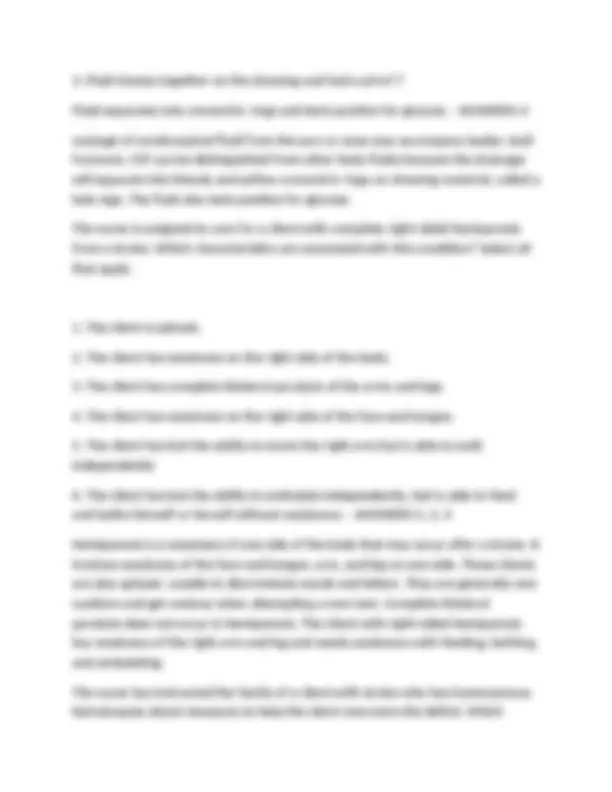
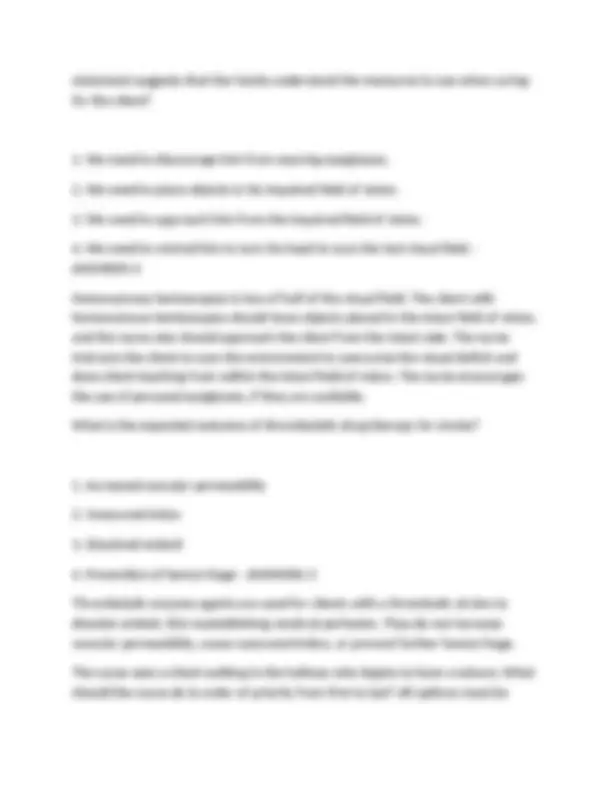
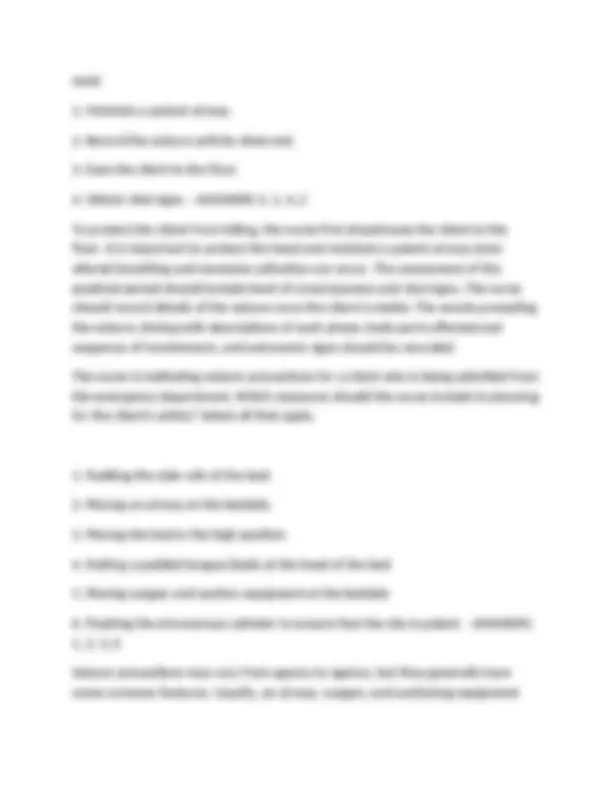
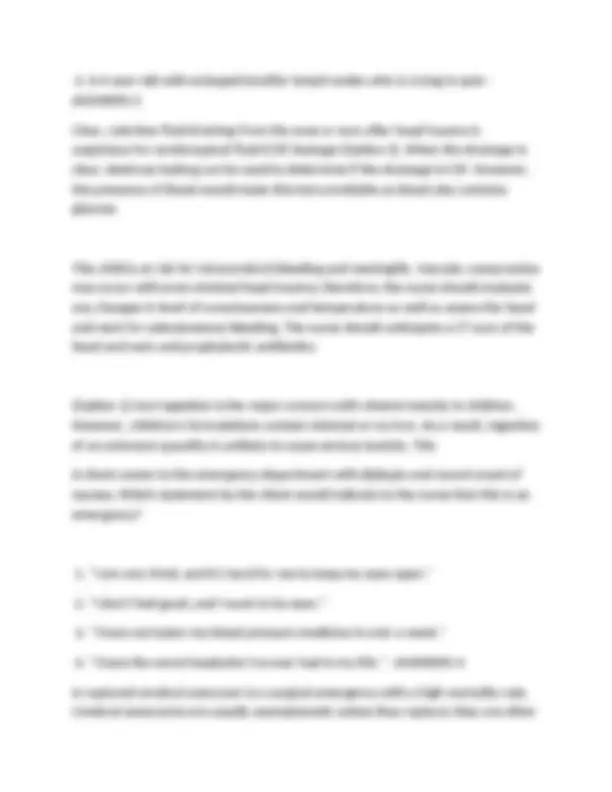
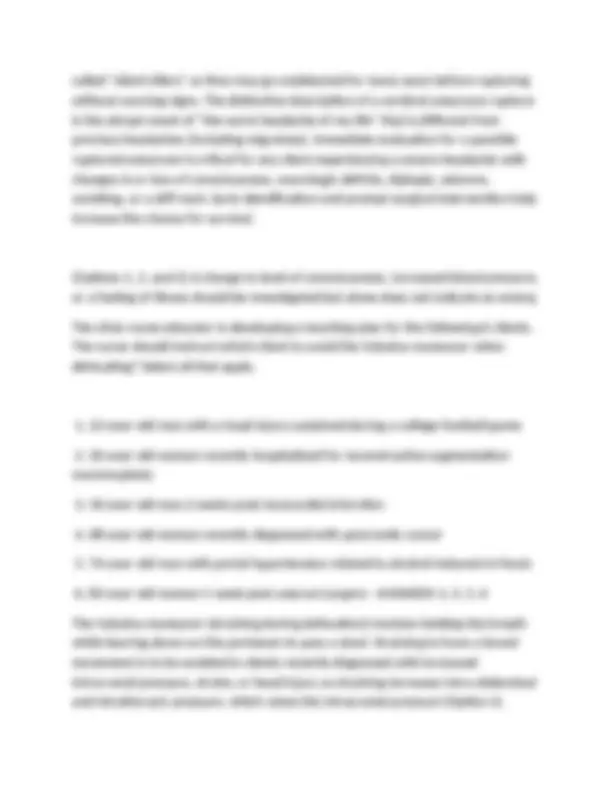
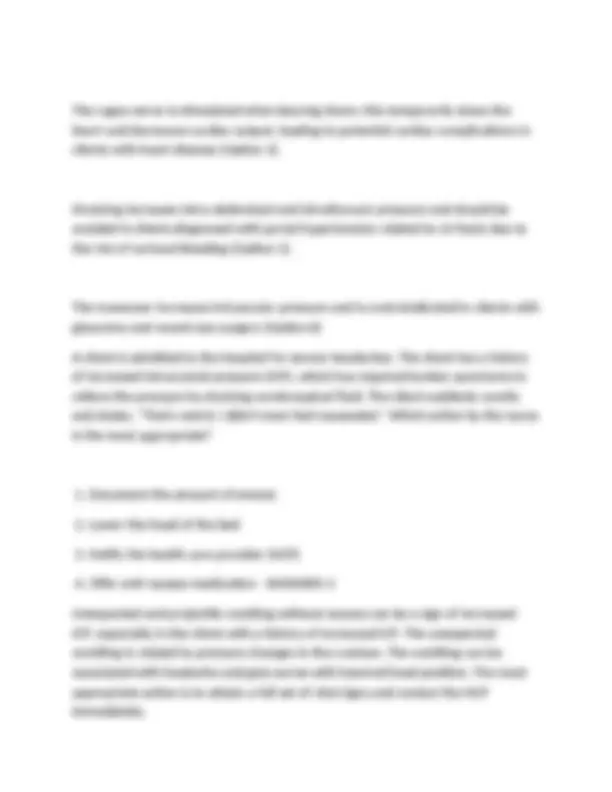
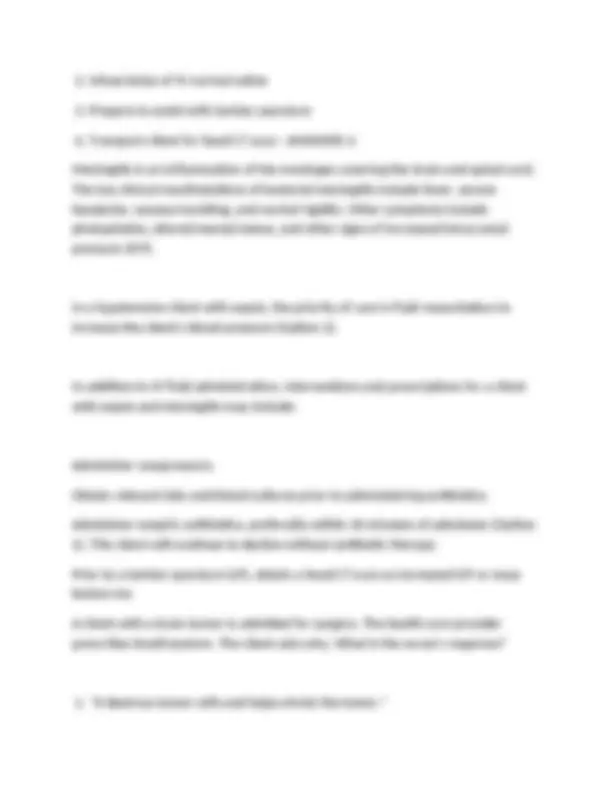
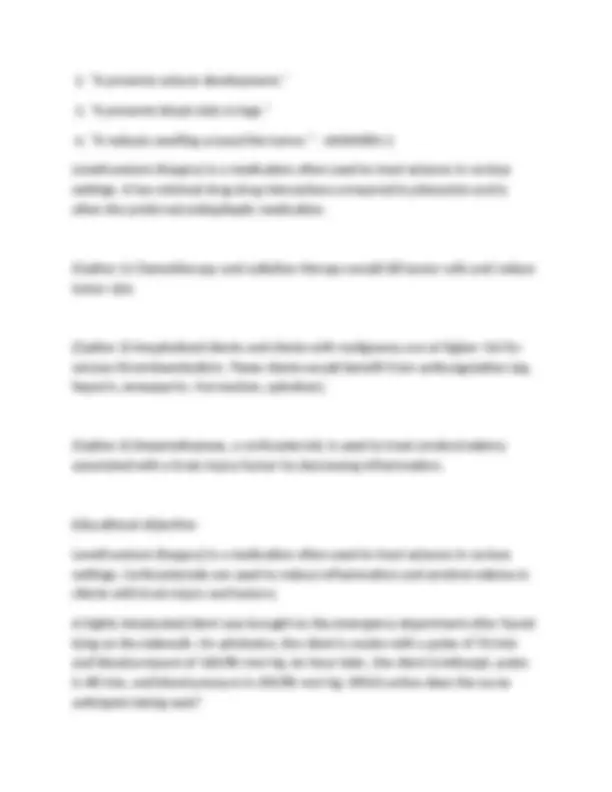
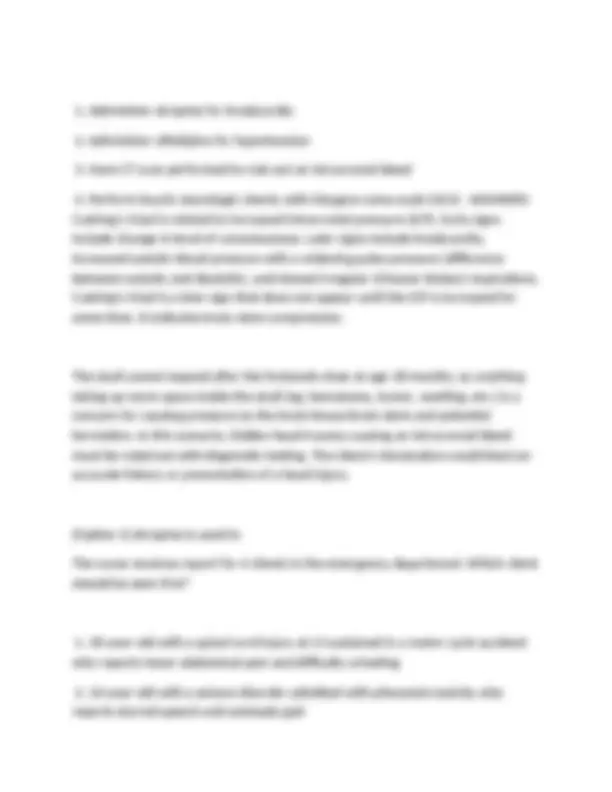


Study with the several resources on Docsity

Earn points by helping other students or get them with a premium plan


Prepare for your exams
Study with the several resources on Docsity

Earn points to download
Earn points by helping other students or get them with a premium plan
Community
Ask the community for help and clear up your study doubts
Discover the best universities in your country according to Docsity users
Free resources
Download our free guides on studying techniques, anxiety management strategies, and thesis advice from Docsity tutors
UWorld NCLEX-RN TEST 2 QUESTIONS WITH COMPLETE SOLUTIONS 2025 GRADED A+ PASS UWorld NCLEX-RN TEST 2 QUESTIONS WITH COMPLETE SOLUTIONS 2025 GRADED A+ PASS
Typology: Exams
1 / 16

This page cannot be seen from the preview
Don't miss anything!










The nurse is caring for the client with increased intracranial pressure. The nurse would note which trend in vital signs if the intracranial pressure is rising?
statement suggests that the family understand the measures to use when caring for the client?
used.
The vagus nerve is stimulated when bearing down; this temporarily slows the heart and decreases cardiac output, leading to potential cardiac complications in clients with heart disease (Option 3). Straining increases intra-abdominal and intrathoracic pressure and should be avoided in clients diagnosed with portal hypertension related to cirrhosis due to the risk of variceal bleeding (Option 5). The maneuver increases intraocular pressure and is contraindicated in clients with glaucoma and recent eye surgery (Option 6) A client is admitted to the hospital for severe headaches. The client has a history of increased intracranial pressure (ICP), which has required lumbar punctures to relieve the pressure by draining cerebrospinal fluid. The client suddenly vomits and states, "That's weird, I didn't even feel nauseated." Which action by the nurse is the most appropriate?
(Option 1) Documentation is important, but it is not the priority action. (Option 2) The head of the bed should be raised, not lowered, for clients with suspected increased ICP. Raising the head of the bed to 30 degrees helps to drain the cerebrospinal fluid via the valve system without lowering the cerebral blood pressure. (Option 4) The vomiting is caused not by nausea but by pressure changes in the cranium. Anti-nausea medications are often not effective. Decreasing intracranial pressure will help the vomiting. Educa The nurse is caring for a client after a motor vehicle accident. The client's injuries include 2 fractured ribs and a concussion. The nurse notes which of the following as expected neurological changes for the client with a concussion? Select all that apply.